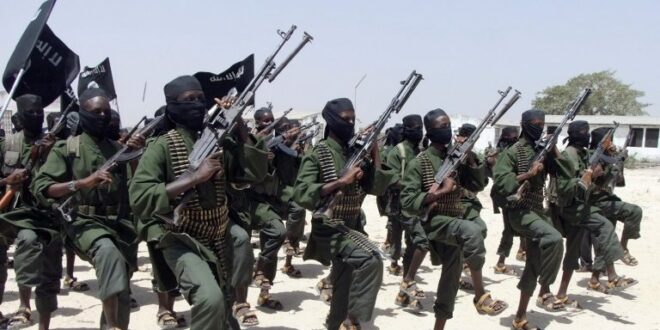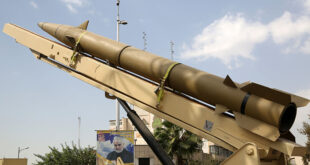Bottom Line Up-Front:
- Al-Shabaab’s July 2025 recapture of Sabiid and Anole underscores the group’s renewed offensive toward Mogadishu, reversing its key territorial losses from The Somali government’s 2022 counteroffensive.
- Al-Shabaab now controls a strategic triangle across Moqokori, Tardo, and Buq-Aqable in central Somalia, enabling it to encircle government positions and sever supply lines.
- Friction between the Somali Federal Government and regional states like Puntland has hampered coordination, weakening the effectiveness of joint counterterrorism operations.
- While the U.S. has escalated airstrikes against Islamic State in Puntland, al-Shabaab’s momentum in southern and central Somalia continues largely unchecked, highlighting concerns over gaps in international focus.
On July 20, al-Shabaab, al-Qaeda’s branch in East Africa, recaptured the towns of Sabiid and Anole, located roughly 40 kilometers southwest of Mogadishu in Somalia’s Lower Shabelle region. The takeover followed the abrupt withdrawal of African Union forces, primarily Ugandan troops, and Somali government forces, which ceased defensive operations amid a wave of deadly al-Shabaab assaults targeting the joint force. The group appears to be maneuvering toward encircling Mogadishu, a strategy underscored by high-profile attacks such as the March 2025 assassination attempt on President Hassan Sheikh Mohamud, carried out with a remote-detonated IED inside the capital. While it is unclear whether al-Shabaab currently possesses the capability to seize Mogadishu outright, its intent to isolate the city and weaken the Federal Government of Somalia (FGS) is becoming increasingly apparent. This renewed push comes amid escalating political tensions between the federal government and regional states like Puntland, whose leadership has publicly criticized Mogadishu for neglecting core security threats in favor of domestic political aims.
Uganda’s withdrawal followed the deaths of twenty Ugandan peacekeepers serving under the African Union Support and Stabilization Mission (AUSSOM) after al-Shabaab carried out a suicide vehicle-borne improvised explosive device (SVBIED) attack. This was the second deadly bombing in recent weeks targeting Ugandan forces in the towns of Sabiid and Anole, following another SVBIED attack last month that claimed the lives of over a dozen troops. These twin attacks reflect al-Shabaab’s increasing use of coordinated, high-casualty operations aimed at targeting both state and international forces. The group’s tactical shift is not only military but psychological, aimed at weakening the morale and cohesion of joint security deployments.
Since launching its Shabelle Offensive in April 2025, the group has rapidly gained strategic and territorial ground across Middle and Lower Shabelle, as well as eastern Hiran. Earlier advances began in February and have brought the group within 50 kilometers of Mogadishu, including the recapture of strategic towns such as Adan Yabaal, which had previously served as the group’s regional operational hub before its capture by government forces. On July 14, al-Shabaab militants seized the town of Tardo in Hirshabelle, south of Moqokori, reportedly without resistance, after Somali security forces and allied clan militias, known as the Macawiisley, withdrew. Tardo’s capture followed the fall of Moqokori a week earlier, underscoring the collapse of local resistance in a region long dependent on community militias and irregular forces for defense. Al-Shabaab fighters reportedly advanced unopposed, and propaganda images released by the group show militants engaging with residents in an effort to legitimize their control.
The seizure of Moqokori and the nearby town of Gumare by al-Shabaab, following coordinated suicide car bomb attacks on government positions, took place in early July 2025. According to al-Shabaab media, 47 soldiers and Macawiisley militiamen were killed during the Moqokori assault, with 65 wounded. The group also claimed to have seized a substantial loot of weapons and military equipment. Moreover, local residents have reported that al-Shabaab has begun setting up roadblocks and collecting taxes in Moqokori, indicating early-phase efforts to institute parallel governance structure and extract revenues. The offensive also appears designed to undermine the morale of Macawiisley fighters who were central to the government’s initial territorial gains against the group.
Al-Shabaab’s control is now firmly entrenched over Moqokori, Tardo, and Buq-Aqable, forming a triangular stronghold in central Somalia that effectively encircles key areas of Hiran and Middle Shabelle. Control over these strategic towns allows the group to directly challenge federal authority. Moqokori is located near major highways connecting to Bulobarde –– a government-held town defended by Djiboutian African Union forces –– and facilitates al-Shabaab’s efforts to sever critical supply lines and weaken state presence in central Somalia. In recent weeks, al-Shabaab has tightened its grip on road access to Bulobarde and Jalalaqsi, a Djiboutian-manned base further south, likely with the intent of isolating both towns and preparing for potential future offensives.
Al-Shabaab’s renewed offensive has effectively undone years of progress by the Federal Government of Somalia (FGS) in reclaiming territory from the group, highlighting both its resilience and enduring strength. The FGS had launched a counteroffensive in August 2022, supported by the United States and Türkiye, which resulted in the recapture of more than 215 locations—primarily in Hirshabelle and Galmudug—according to a 2023 report by the Armed Conflict Location & Event Data Project (ACLED). However, since then, al-Shabaab has not only regained much of the territory it had lost, but it has also expanded its recruitment efforts across Somalia and East Africa, sustained its financial strength as al-Qaeda’s wealthiest affiliate, and preserved access to weapons and ammunition.
The group’s advances have taken place against a backdrop of Somalia’s increasingly fragmented domestic political landscape. Ongoing power struggles between the FGS and member states like Puntland and Jubaland have undermined coordination and counterterrorism efforts. The National Consultative Conference (NCC) in May which was not attended by two of the most populous and military significant regions of Somalia, Puntland and Jubaland, highlighted political fragmentation and firm disagreement with President Mohamud’s perceived push to centralize executive power and weaken the federal model. While renewed cooperation on national security was expounded upon at the NCC, SCC-Kaatumo –– located in northern Somalia –– was recognized as a federal member state. The formal recognition without participation from the Darood-level regions of Jubaland and Puntland does not bode well for counterterrorism cooperation.
Although Somali security agencies have launched a handful of retaliatory actions against al-Shabaab, these efforts appear constrained and reactive. On July 13, Somalia’s National Intelligence and Security Agency (NISA) claimed responsibility for an airstrike near Buq-Able – in Bulo Hog village – that reportedly eliminated seven militants, with follow-up raids reported the next day. Yet, such operations have had a marginal impact on the momentum of the insurgency or recent acceleration in territorial gains.
The U.S. has primarily centered its 2025 counterterrorism efforts on Islamic State (IS) cells in northern Puntland. According to data from ACLED, over 30 strikes have been conducted against suspected IS positions in the Cal Miskaad range so far this year, while fewer than two dozen have targeted al-Shabaab. The U.S. military has offered few details on the outcomes or precise scale of these missions, casting a shadow on their effectiveness. This imbalance has led to growing concerns that the international response may be lagging behind the pace of al-Shabaab’s resurgence in central and southern Somalia. The U.S. focus on IS in Puntland is partially driven by the goal of preventing an international IS “safe haven,” however it is clear that al-Shabaab is leveraging this shifting international focus to reconsolidate its areas of operations.
 Eurasia Press & News
Eurasia Press & News




